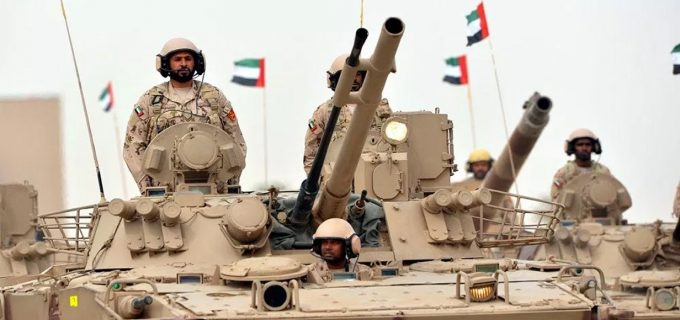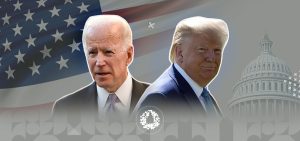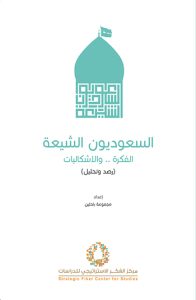The United Arab Emirates announced on July 8, 2019 the reduction of the number of its military forces deployed in Yemen and their relocation in some areas. The decision comes at a time when the attacks by the Houthi (Ansar Allah) militia on Saudi areas and installations have increased, and tension in the Gulf Sea has escalated. Despite Abu Dhabi’s claim of coordination with Riyadh, the New York Times revealed days later (July 12, 2019) that Riyadh has been trying to discourage Abu Dhabi’s decision.
In turn, the Yemeni government and the Yemeni political forces have shown no interest in the Emirati decision due to the problems posed by the UAE’s political and military role, especially in the last two years, in preventing the return of Yemeni President Abdrabbuh Mansur Hadi to the temporary capital Aden and supporting armed factions out of the Yemeni government’s control.
The UAE had previously announced in June 2016, the end of its military operations in Yemen, but then re-launched an attack on the western coast of Yemen (al-Hudaydah Governorate), backed by the armed factions it had assembled and armed.
The assessment of the situation examines UAE’s motives behind the reduction of the number of its forces in Yemen, the implications of its strategy on the Saudi role, and whether this will lead to the promotion of peace opportunities or the generation of more conflicts in Yemen.
The nature of the UAE’s military presence in Yemen
The United Arab Emirates intervened militarily in Yemen on March 26, 2015, as part of the Decisive Storm operations launched by the Arab Coalition formed by Saudi Arabia in response to a call by Yemeni President Abdrabbuh Mansur Hadi to support his government, in order to thwart the coup and restore the state institutions and areas attacked by Houthi militants in cooperation with the former President Ali Abdullah Saleh in an attempt to regain power he has lost following the 2011 revolution.
After the decision of the intervention of the Arab Coalition countries, the management of military areas operations in Yemen has been divided under the leadership of Saudi Arabia and the United Arab Emirates and a symbolic Sudanese presence. Saudi Arabia has led the operations of the Yemeni areas bordering its southern borders, covering the governorates of Hajjah, Saada, and al-Jawf, in addition to Ma’rib Governorate and Naham Front in Sana’a Governorate. As for the UAE’s military presence, it has been concentrated in the southern governorates (Aden, the interim capital, Shabwah, the coast of Hadhramaut, Sarawah Front in Ma’rib, and later Mocha Port and al-Khawkhah District in the Red Sea). Since the beginning of the military intervention, the UAE has repositioned its military forces in favor of the Saudi forces, sometimes according to its own calculations, and sometimes under popular pressure discontented with the UAE role, as was the case in Socotra Archipelago Governorate.
The number of UAE troops in Yemen is unknown. In the management of the conflict, as well as the Sudanese forces, and mercenaries of foreign private companies, which are reported to number up to 90 thousand, the UAE depends on the Security Belt Forces, managed by the Transitional Council, the Hadrami Elite Forces, Shabwani Elite Forces, Giants Brigades with a Salafist background, the Guardians of the Republic Guards led by Tareq Saleh in the West Coast, and Abu al-Abbas Brigades in the countryside of Taiz Governorate. The Giants Brigades, the Republic Guards, and Tihamah Resistance are spread in the west coast, under the name of Joint Forces.
A senior UAE official told Reuters on June 28, 2019 that the UAE is still fully committed to the Military Coalition and would not “leave an empty space” in Yemen. In contrast, a Western diplomat pointed out that the UAE had withdrawn “a lot” of troops from Yemen in the past three weeks.
According to local sources, the UAE forces have left the entire governorate of Ma’rib, leaving only a few officers and vehicles in the West Coast. Nevertheless, the UAE is still keen on ensuring its military presence and control in the interim capital Aden, despite the reduction in the number of its troops.
The UAE has recently worked on establishing new camps for armed groups and distributing them in different areas to ensure control of sensitive areas, particularly those containing energy sources, such as Aden and Shabwah.
UAE’s motives for the reduction of its forces in Yemen
The UAE’s reduction of its forces in Yemen has raised questions about its political and military objectives, the possibility of expanding its political options and the margin of maneuvering in the Yemeni file, on regional and international levels.
The UAE had previously announced in June 2016 via the Minister of State for Foreign Affairs Anwar Gargash, in a press conference in Abu Dhabi, the end of its military operations in Yemen. “Our position today is clear: the war is practically over for our soldiers and we are monitoring the political arrangements. Our main role is now focused on the empowerment of Yemenis in liberated areas,” Gargash said. Abu Dhabi Crown Prince Mohammed bin Zayed quickly quoted Gargash’s statements via his official Twitter account, mentioning the objectives of the Decisive Storm operations: “Anwar Gargash: Three clear objectives of Operation Decisive Storm, which are the return to the political path, the return of legitimacy and the response to Iranian intervention.”
Reviewing the achieved objectives, the political path remains almost suspended. Until now, Yemeni President Abdrabbuh Mansur Hadi (the legitimate president) has not been able to return to the temporary capital Aden, while he was supposed to return to the capital Sana’a after its liberation from the Houthis in 2015, according to the objectives of Operation Decisive Storm.
As for the response to the Iranian intervention, its presence in the southern provinces has been weakened by military operations and the attraction of some of its figures. In contrast, the grip of the Houthi group, Iran’s ally, has been strengthened in its areas of control.
The UAE’s motives for the reduction and relocation of its forces in Yemen can be identified as follows:
– Polishing UAE’s image in front of the international community, as it has been damaged in recent years as a result of its military intervention in Yemen and the accompanying human rights violations. Therefore, improving the image of the UAE and showing its keenness for peace in the international scene is one of its main objectives. This keenness has been clear in UAE officials’ statements to press agencies. “The UAE is moving from a military strategy to a peace-based plan,” AFP news agency quoted an Emirati official. A UAE official told Reuters that the withdrawal decision is driven by a desire to support a fragile UN-mediated cease-fire in al-Hudaydah in December.
– Expelling the Houthis from the southern governorates, as the UAE considers it an achievement of a major goal of the Coalition, and then limiting its understanding with the Houthi group to the northern governorates.
– Reducing human, financial and even moral losses, and relying, in the management of the conflict, on armed groups which the UAE has formed and trained, and with which it shares common interests, and which have worked on excluding political Islam trends, on top of which was the Yemeni Congregation for Reform (al-Islah). In this regard, a UAE official said that their forces have trained 90 thousand Yemeni soldiers.
– Denying responsibility in case the southern parties – the secessionist they are supporting – took any actions threatening the presence of the Yemeni government in the interim capital of Aden.
– Resurging threats in the Gulf area, compromising UAE interests as well as Washington and London’s attempts to form an international coalition to protect vital oil shipping lines in the Strait of Hormuz. During the US Secretary of State Mike Pompeo visit to Saudi Arabia and the UAE, Sheikh Mohammed bin Zayed Al Nahyan, urged him to strengthen maritime security, and said: “We will need all of you to participate with your military forces.”
Outcomes of the UAE’s reduction of its forces?
The UAE could possibly act against the Saudi position, which is currently suffering the repercussions of the conflict in Yemen, and coordinate with Houthis, leaving Riyadh at the mercy of Abu Dhabi’s allies whether in the north or the south. Especially, in case the legitimate force was destroyed or weakened or at least the spread of mistrust between Saudi Arabia and this force, increasing the level of the kingdom’s military, political and ethical responsibility. The more the UAE is retreating from Yemen, Saudi Arabia will have to adopt policies and procedures with the Yemeni government and the political and military parties to prevent any agenda serving the interest of the militias fighting the government over sovereignty and any voids that may be filled by violent groups.
International pressure will focus on Saudi Arabia, holding it responsible for the continuation of the war and its humanitarian ramifications. Through media coverage and the political analysis it has provided, the UAE appears to have achieved some of its planned goals showing the will to reduce conflict and achieve peace.
The way Saudi Arabia and the UAE dealt with the Iranian threat revealed differences at the level of the foreign policy of both countries. Riyadh directly accused Tehran of attacking ships in the Gulf, while the UAE refrained from charging Iran.
At this time, the UAE decision best serves the Houthis militia in the governorates of the north. It will also have effects on the level of field and relationships with Saudi Arabia and show the war as a Saudi failing attempt, then recognize the residual control of Houthis in Sana and the remaining governorates.
For its part, the UAE-backed Transitional Council, which is struggling to control the liberated southern provinces, is trying to extend its control over state institutions and complete its preparations, making the government’s presence symbolic.
In the past period, some Yemeni public bodies have called for removing the UAE from the Arab alliance because it has prevented Yemeni President Abdrabbuh Mansur Hadi from returning to the temporary capital, the UAE-held Aden, where the parliament is convened.
Scenarios
The scenarios pertaining to downsizing Emirati forces revolve around opportunities for a political solution or further engendering conflicts, especially in areas where Houthis militia have been defeated.
First Scenario: Enhancing opportunities for peace
The scenario suggests that reducing UAE’s military forces, in light of increased Western pressure demanding the cessation of the war, stands as a proof to refraining from the adoption of the military option to defeat the Houthis, after more than four years of military intervention in Yemen. Thus, it will support a political settlement, as a result of the UAE’s will to further strengthen its military presence in the governorates having economic importance in the south, namely the interim capital (Aden), the port of Balhaf affiliated to Shabwa governorate, as well as the coast of Hadramout.
This scenario assumes that the continuation of the conflict following its current pattern goes against the objectives of the UAE, as it may change the balance of power in favor of the political parties having common interests. One of the benefits of this scenario is resuming negotiations between the Houthi group and Saudi Arabia and reaching common understandings.
The scenario depends on the state of peace reigning in the internal military fronts except for the ones adjacent to the Saudi-Yemeni border, in addition to international pressure aiming to stop the war and reach a political settlement to the conflict. Since, the UAE has managed to achieve its objectives, which focused on removing the Houthis militia, and weakening the forces loyal to the Yemeni government, in exchange for bringing together, forming, providing military training to separatist groups, in addition to offering support and effective management and set goals, it will then focus on supporting the political process, in a way that maintains the current balance of power and interests, especially in the ports of southern Yemen, specifically Aden strategic port, which is considered as a threat to the ports of Dubai.
This scenario comprises the multiplicity of conflicting parties, contradiction of their local interests, interruption of their regional alliances, halting the political process and disrupting the current balance of power if the war ceases. It serves the interest of the Houthis, sparing them the concessions the Yemeni government and coalition forces failed to achieve militarily. Achieving peace calls for strengthening the presence of government, military and civilian institutions, weakening armed militia and reducing its financial, military and political support, especially those offered to Houthi group and Southern Transitional Council.
For all the above mentioned, as well as the regional complexities, and the transformation of the conflict in Yemen into a proxy war run by Iran against Saudi Arabia, any settlement is a temporary truce to resume the fighting and at a higher level.
Second Scenario: Engendering more local conflicts
The scenario states the assumption suggesting that a political settlement or military solution to the conflict is impossible to reach and the UAE does not want to achieve the declared goals of the coalition. It is also based on the fact that the conflict expected to continue has depleted the UAE’s capabilities and downsizing its forces deployed in Yemen would better serve its interest, in addition to Saudi Arabia’s draining the forces of the Yemeni government at the same time and relying on the militias of the Southern Transitional Council Tariq Salih Brigades in the northern regions, affiliated to the nephew of former President Ali Abdullah Saleh.
The UAE’s move may be a prelude to avoiding responsibility to the international community for the consequences of a scheme implemented by the Southern Transitional Council militia, adopting the strategy of quick self-arming with the aim of extending its control over government institutions in the interim capital (Aden) and areas containing oil, in an attempt to split.
This scenario supports the absence of a force capable of military decisiveness, turning Yemen into an arena for proxy wars, and the previous confrontations between the Yemeni government and the transitional council occurring in January 2018, as well as increasing disparities among the UAE-backed militias that do not share the same goals.







